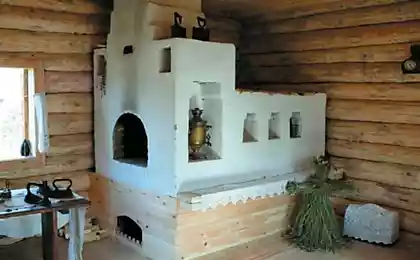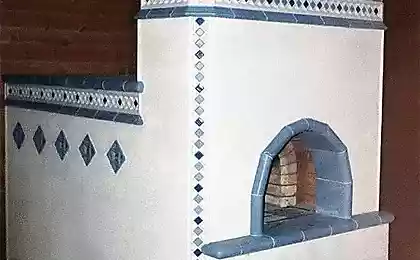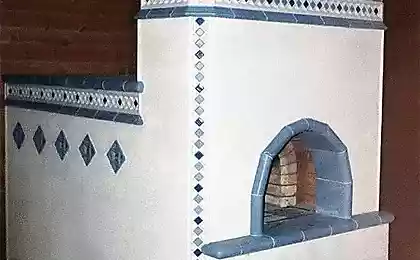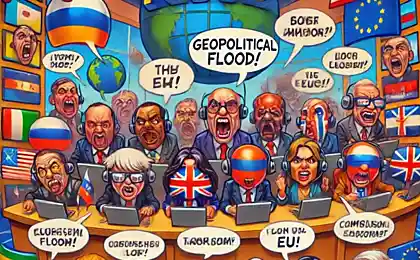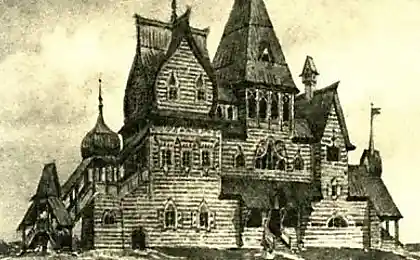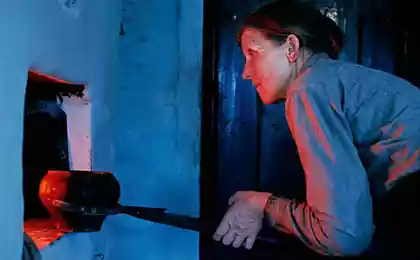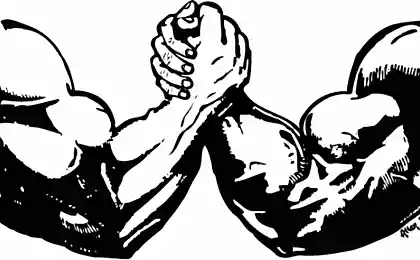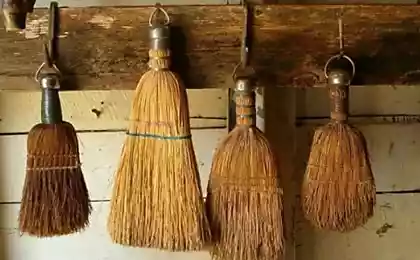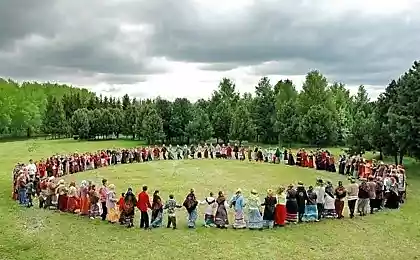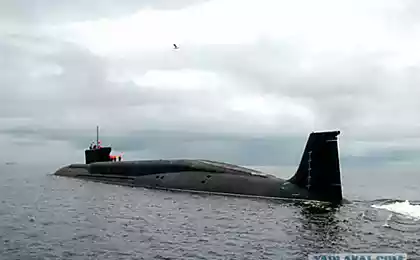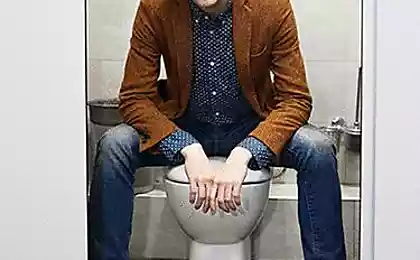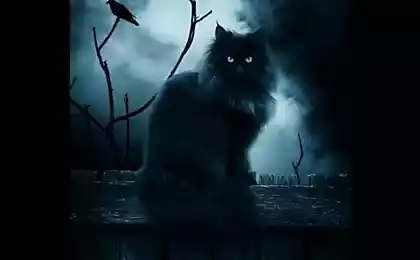1991
The interior of the hut Russian
Russian log hut - a Russian small. Its fate is very similar to the fate of the Russian people, when something original, good and hearty. These Russian hut came to us thanks to the centuries-old fidelity to the precepts of the peasants of antiquity. Architecture Russian hut shows unparalleled resistance traditions. Not only the style, but also constructive device layout structure of Russian log hut and its interior decoration developed over thousands of years.

Russian house is a wooden house, partially stretching into the ground. Despite the fact that the hut most often consists of a single room, it is conditionally divided into several zones. Was there a furnace corner, which was considered a dirty place and separated from the rest of the cottage curtain was as a female angle - the right of the entrance, and a man - the hearth.
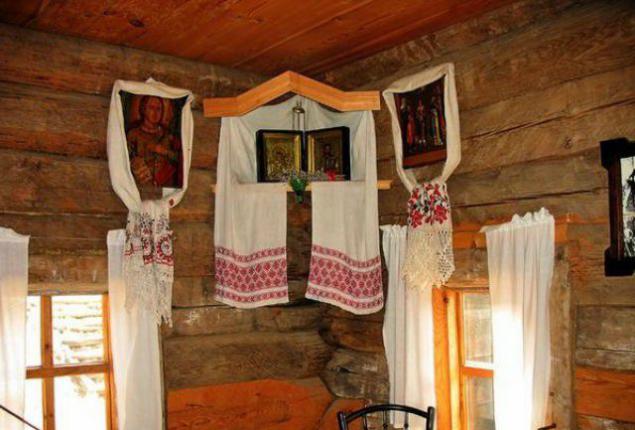
Red Corner was the most important and honorable place in the house. In Russia, hut always lined up in a certain way with a view of the horizon, the red corner is on the east side, in the most distant and well-lit area. It was the home iconostasis. It was considered important that the entrance into the house, the person should first pay attention to the icon.
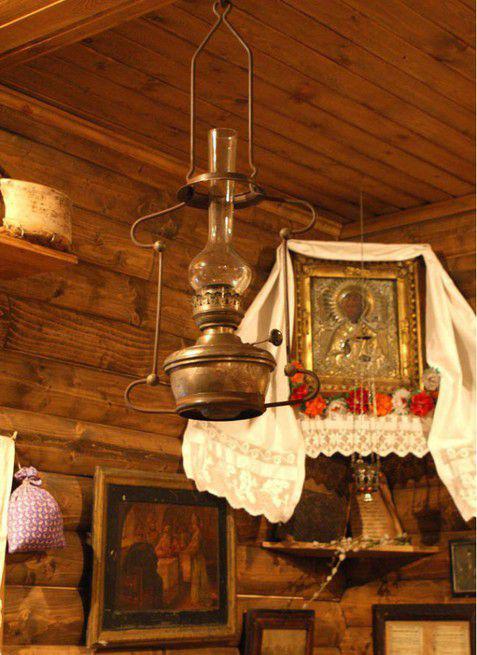
Icons installed on a special shelf and always had to stand in a certain order. The most important icons that had to be in every home, considered an icon of the Mother of God and Savior. Red Corner is always kept clean, and sometimes decorated with embroidered towels.
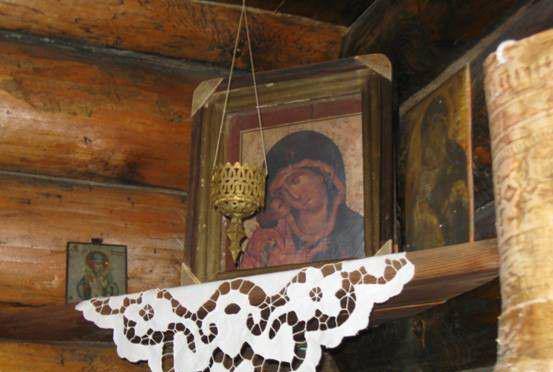
The huts in which the stove stoked in black, called Qurna (without tube).

Initially, the peasant hut had only one room. Later they began to build the so-called five-wall, where the total area of the log wall was divided into two parts.
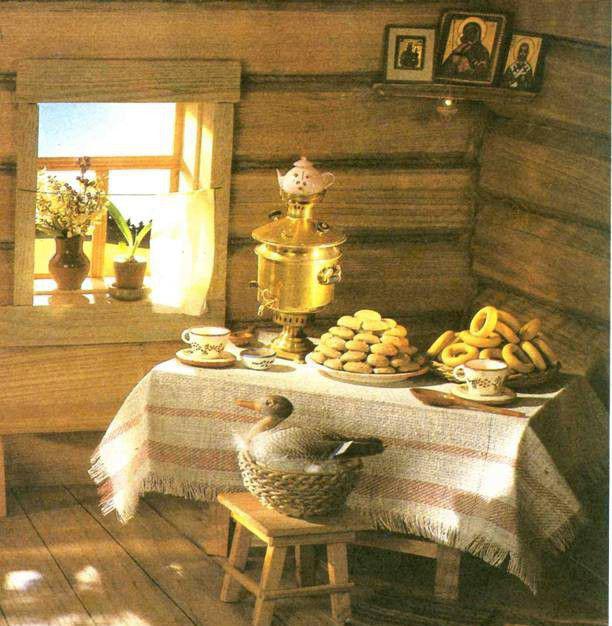
The windows were closed at the beginning mica or bullish bubbles. Glasses in Novgorod and Moscow appeared in the 14th century. But they were very expensive and put them only in wealthy homes. And mica, and bubbles, and even then only glass transmits light, and what was happening on the street, through them could not be seen.
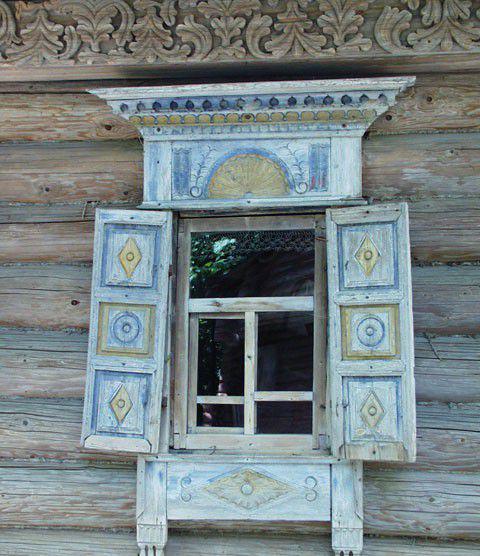
In the evenings, when it was getting dark, Russian log hut lit kindling. The beam torches inserted in special forged svettsy that could be mounted in any position. Sometimes used oil lamps - small bowls with upturned edges. Only relatively wealthy people could afford to use for this purpose candles.

The interior of the traditional Russian log hut special luxuries are released. Every thing was needed on the farm, and the inner area of the hut was strictly divided into zones. For example, right from the stove called the woman's angle kut or Sereda. It commanded the mistress, it was adapted for cooking, but here was a spinning wheel. Usually, this place has been fenced, hence the word nook, ie, isolated place. The men here are not included.
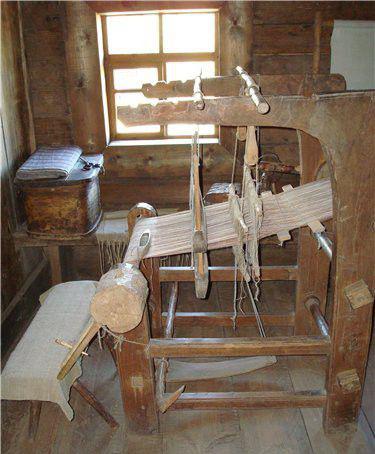
In good owners in the house all sparkling clean. On the walls - white embroidered towels; floor tables, benches scraped; lace ruffles on the beds - valances; Salaries icons polished to a shine. The floor of the hut was made of solid timbers wide - logs, chopped in half, with carefully hewn one flat side. Cluley slaughterhouse door to the opposite wall. So halves were better, and the room seem larger. Paul lay three or four crown above the ground, and thus form the underground. In it preserved foods, pretzels. A floor elevation almost a meter from the ground made the house warmer.
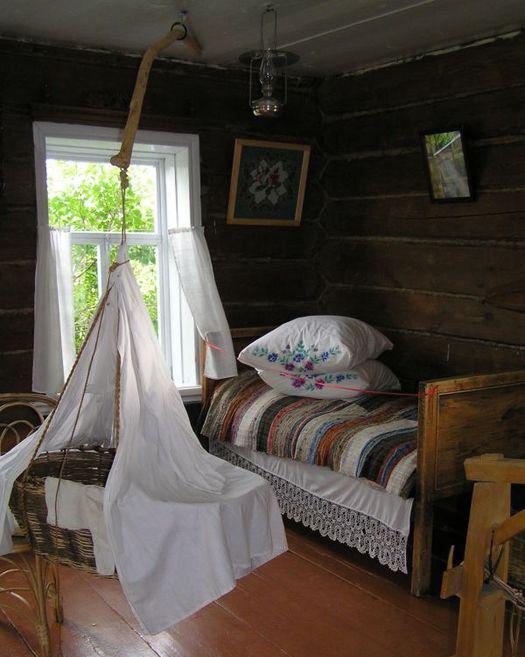
Almost everything in the house was done by hand. Long winter evenings cut bowls and spoons, digging buckets, woven, embroidered, woven sandals and tuesa baskets. Although no different decoration hut variety of furniture: tables, benches, bench (bench) Stoltz (stools), chests, - everything was done carefully, with love and it was not only useful, but also beautiful, adorable. This desire for beauty, skills handed down from generation to generation.


Russian house is a wooden house, partially stretching into the ground. Despite the fact that the hut most often consists of a single room, it is conditionally divided into several zones. Was there a furnace corner, which was considered a dirty place and separated from the rest of the cottage curtain was as a female angle - the right of the entrance, and a man - the hearth.

Red Corner was the most important and honorable place in the house. In Russia, hut always lined up in a certain way with a view of the horizon, the red corner is on the east side, in the most distant and well-lit area. It was the home iconostasis. It was considered important that the entrance into the house, the person should first pay attention to the icon.

Icons installed on a special shelf and always had to stand in a certain order. The most important icons that had to be in every home, considered an icon of the Mother of God and Savior. Red Corner is always kept clean, and sometimes decorated with embroidered towels.

The huts in which the stove stoked in black, called Qurna (without tube).

Initially, the peasant hut had only one room. Later they began to build the so-called five-wall, where the total area of the log wall was divided into two parts.

The windows were closed at the beginning mica or bullish bubbles. Glasses in Novgorod and Moscow appeared in the 14th century. But they were very expensive and put them only in wealthy homes. And mica, and bubbles, and even then only glass transmits light, and what was happening on the street, through them could not be seen.

In the evenings, when it was getting dark, Russian log hut lit kindling. The beam torches inserted in special forged svettsy that could be mounted in any position. Sometimes used oil lamps - small bowls with upturned edges. Only relatively wealthy people could afford to use for this purpose candles.

The interior of the traditional Russian log hut special luxuries are released. Every thing was needed on the farm, and the inner area of the hut was strictly divided into zones. For example, right from the stove called the woman's angle kut or Sereda. It commanded the mistress, it was adapted for cooking, but here was a spinning wheel. Usually, this place has been fenced, hence the word nook, ie, isolated place. The men here are not included.

In good owners in the house all sparkling clean. On the walls - white embroidered towels; floor tables, benches scraped; lace ruffles on the beds - valances; Salaries icons polished to a shine. The floor of the hut was made of solid timbers wide - logs, chopped in half, with carefully hewn one flat side. Cluley slaughterhouse door to the opposite wall. So halves were better, and the room seem larger. Paul lay three or four crown above the ground, and thus form the underground. In it preserved foods, pretzels. A floor elevation almost a meter from the ground made the house warmer.

Almost everything in the house was done by hand. Long winter evenings cut bowls and spoons, digging buckets, woven, embroidered, woven sandals and tuesa baskets. Although no different decoration hut variety of furniture: tables, benches, bench (bench) Stoltz (stools), chests, - everything was done carefully, with love and it was not only useful, but also beautiful, adorable. This desire for beauty, skills handed down from generation to generation.



